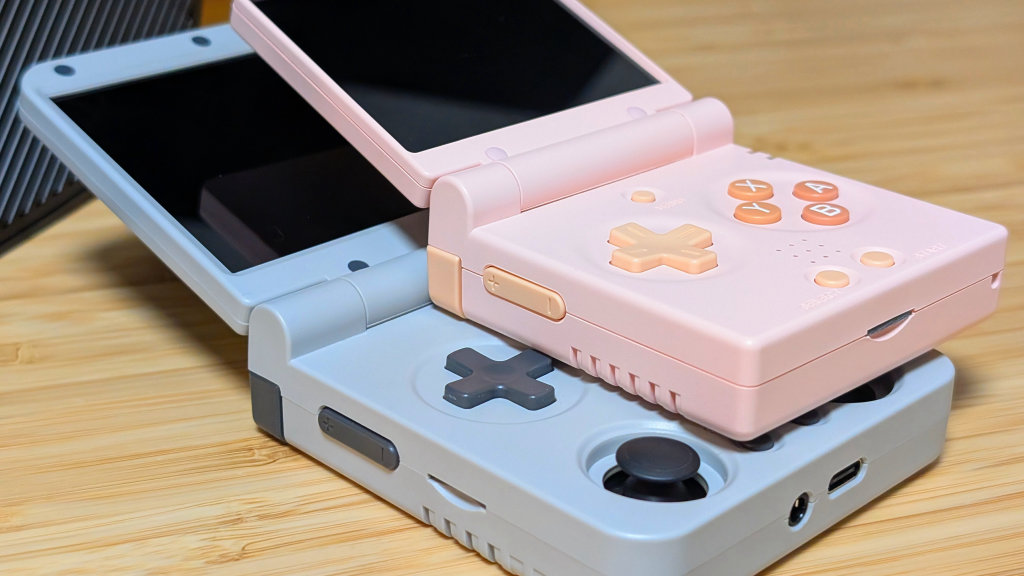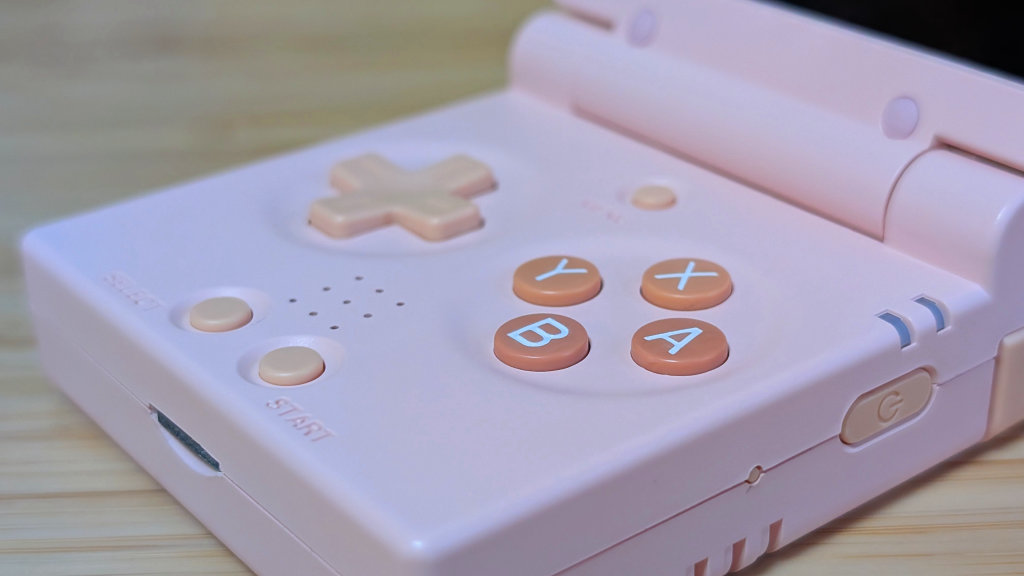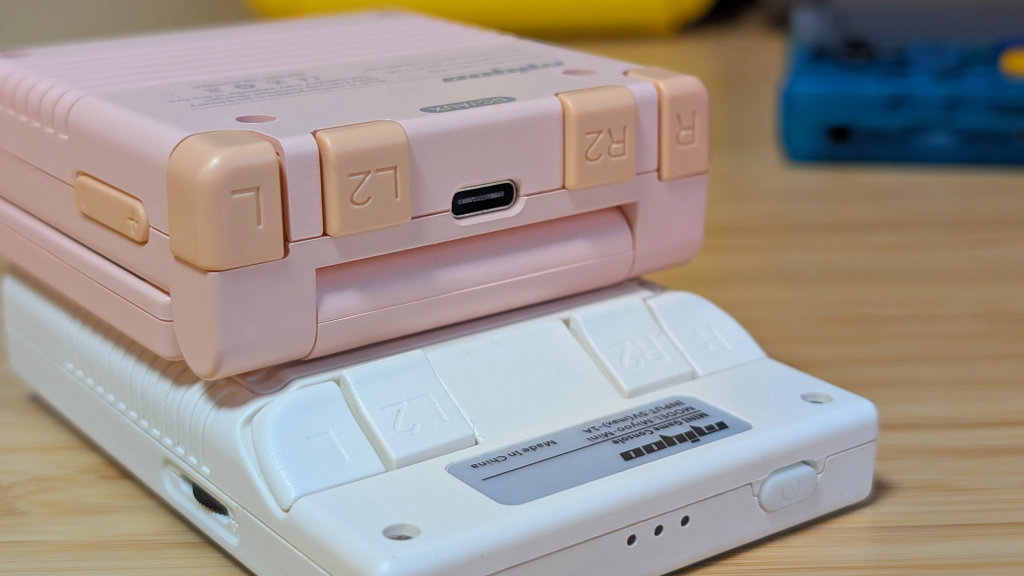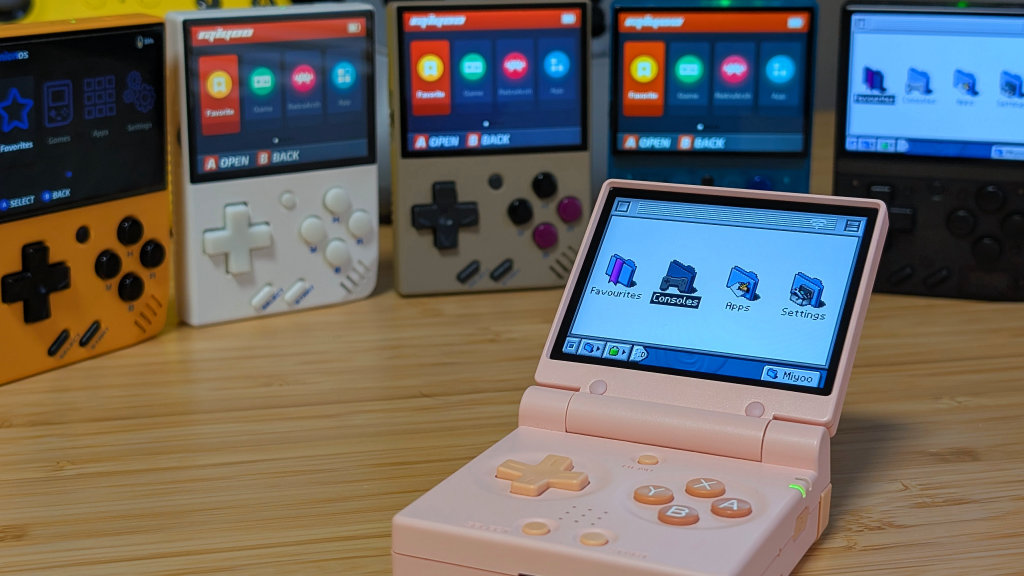The original Miyoo Mini came out in 2021. December to be precise, and it was one of my earliest “I really love this thing” handhelds. While its variations trickled out over the years, it was “upgraded” to the Miyoo Mini Plus in 2023. Larger in size, but worse off in comfort for me, I threw it aside three times and haven’t gone back to it since. Jump up to 2025 to its replacement with the Miyoo Flip, and we’re all disappointed in the build quality, the hinge, and the fact that some SD slots just died.
So what if it was smaller and ran Onion? Enter the Miyoo Mini Flip, and with my first impressions, I’m here to see if it could be the successor to my beloved Miyoo Mini collection.
Miyoo Mini Flip Specs

- CPU: Sigmastar SSD202D
- RAM: 128MB
- Screen: 2.8-inch IPS, 750 x 560 (4:3)
- Battery: 2500mAh
- Connectivity: 1x USB-C, 1x microSD, Wi-Fi
- OS: Miyoo Stock, Onion, MinUI, Allium, sprigUI, Koriki
- Dimensions: 66 x 67 x 24mm
- Weight: 123 grams
The price this time is a bit higher, $52.99 plus shipping. This is well above the regular $40 price of a Miyoo Mini V4, but have you gotten anything new besides a hinge?
No.
What I Like

First and foremost, the hinge of the Miyoo Mini Flip is much improved over the original Miyoo Flip. While that one felt like I was breaking its knees because it owed me money, the Mini Flip nicely pops into each of its three hinge positions before snapping shut with some form of satisfaction. If there’s one thing you don’t mess up on a clamshell, that’s going to be the hinge. If yours cracks or breaks within a few months, it’s not a good hinge.
Following that come the controls. For the most part, it feels like it’s stealing the face buttons of the original flip. The buttons are just as light and clicky, while the dpad feels similar, albeit mini now. Start, Select, and Menu all end up feeling a bit clicker this time around, but overall it isn’t a bad experience when it comes to face buttons.
The last thing I want in my initial likes is just the onboard software support. Out of the gate, Miyoo’s internal software is a lot better; however, it’s the third-party support that’s already great. Onion and MinUI are essentially all I can ask for when it comes to mini support. That being said, there’s already even more software in development for the Mini Flip, including both SprigOS as well as Allium. I can’t wait to see what everyone does with this little machine.
Oh yeah, and the Mini Flip manages to be super portable and protective of its screen thanks to being a clamshell that won’t shatter like my back when I sleep wrong.
What I Don’t

The shoulder buttons feel…weird. They’re not bad, but they’re not good either. They have a really light and uneven click on my pink model at least, and while they are clicky and quiet, they just have a bit of a mushy feel to them. I can’t get past. They’re usable in any game that you’re going to want to use them in, but I wouldn’t try to make them my primary go-to. At least not yet.
Alongside that, the screen is just a bit strange to boot. The 750×560 panel is incredibly pixel-dense for its size, and was first seen in the Miyoo Mini V4. While many laud it for its ability to scale GBA at such a small size, others are unhappy because of the poor scaling for anything 480p.
I think it’s fine for the most part. I’m a heathen who doesn’t often bother with integer scaling, and prefer to get the most out of my screen size; however, if you are someone who needs to be pixel perfect, I don’t know if this is going to be your best bet.
Is it an Improvement?

Compared to the Miyoo Flip, I’ll take this all seven days of the week. A better hinge, better community support, and overall better experience? I’ll take that over the loss of power going from a 3566 to a Sigmastar SSD202D. You can still power through everything up to PS1 and even clamour in some Nintendo DS. You just lose out on jank N64, PSP, and Dreamcast.
Compared to the standard stack of Miyoo Mini’s, I think I’d pick the flip. A lot of it’s the same, with worse shoulder buttons, but it does everything the others do while being even more portable. The other upside is durability. While the Miyoo Mini’s had a backstory of being awkwardly fragile, the Mini Flip at least feels like it could hold up to a drop.
Is this the clamshell of the year? With the Thor here, that might be an awkward question. But in the same $50-$80 price range? Its real competition is Anbernic. And at that point, it’s more about how many inches you want in your pants. 2.8” and 3.5” don’t sound too different, but they can have a real impact on the full experience. I think I’ll end up happy, settling for the smaller screen. But what do you think?
What did you think of this article? Let us know in the comments below, and chat with us in our Discord!
This page may contain affiliate links, by purchasing something through a link, Retro Handhelds may earn a small commission on the sale at no additional cost to you.

I’d prefer the rg43xx sp. Slightly larger but nicer screen, battery life and build quality.
Obviously perfect gba scaling is the main benefit but 3:2 isn’t far off from 10:7 megadrive or 16:9, plus plenty of portmaster games support custom aspect ratios.
128G of RAM?!?! That’s literally out of this world! So thatcmust mean it has about 64Terrabytes of Storage then, right Ban?! 😛
MY BAD I MISREAD. IM A DUMBASS
Is actually enough.
Lol